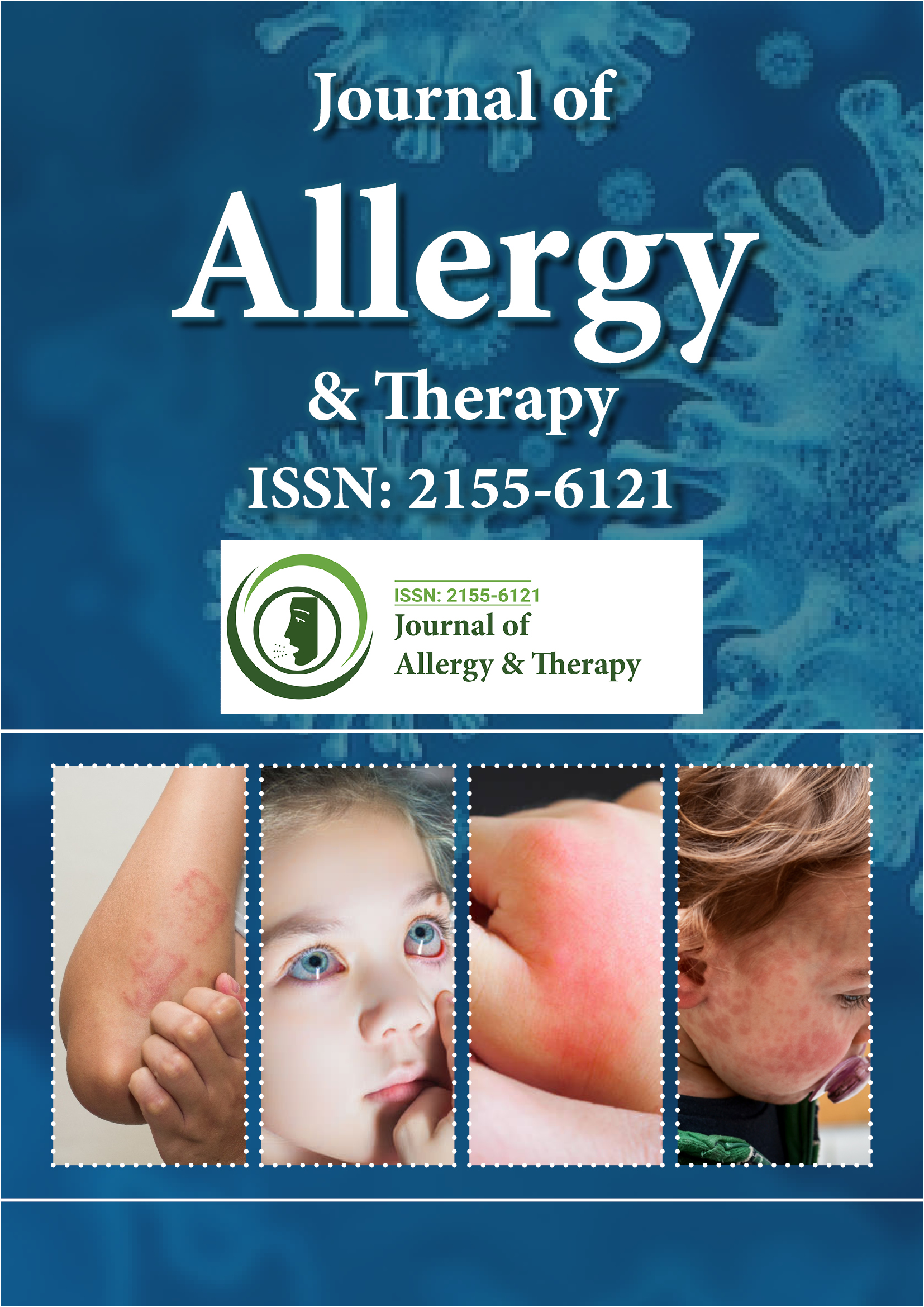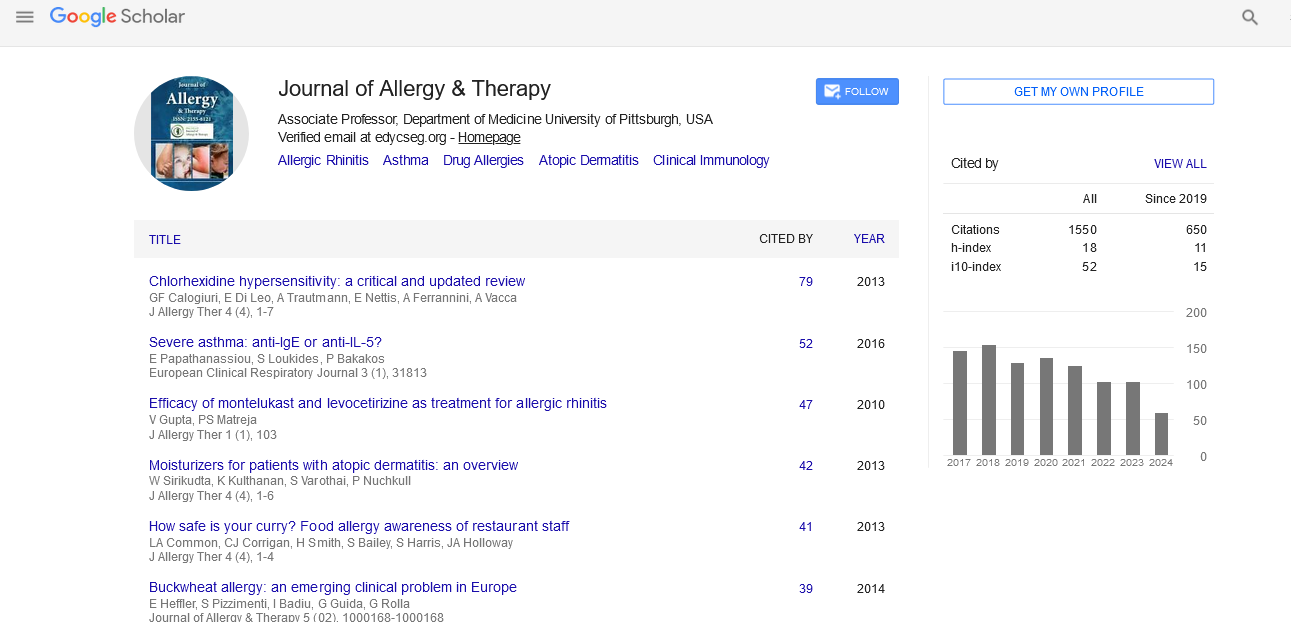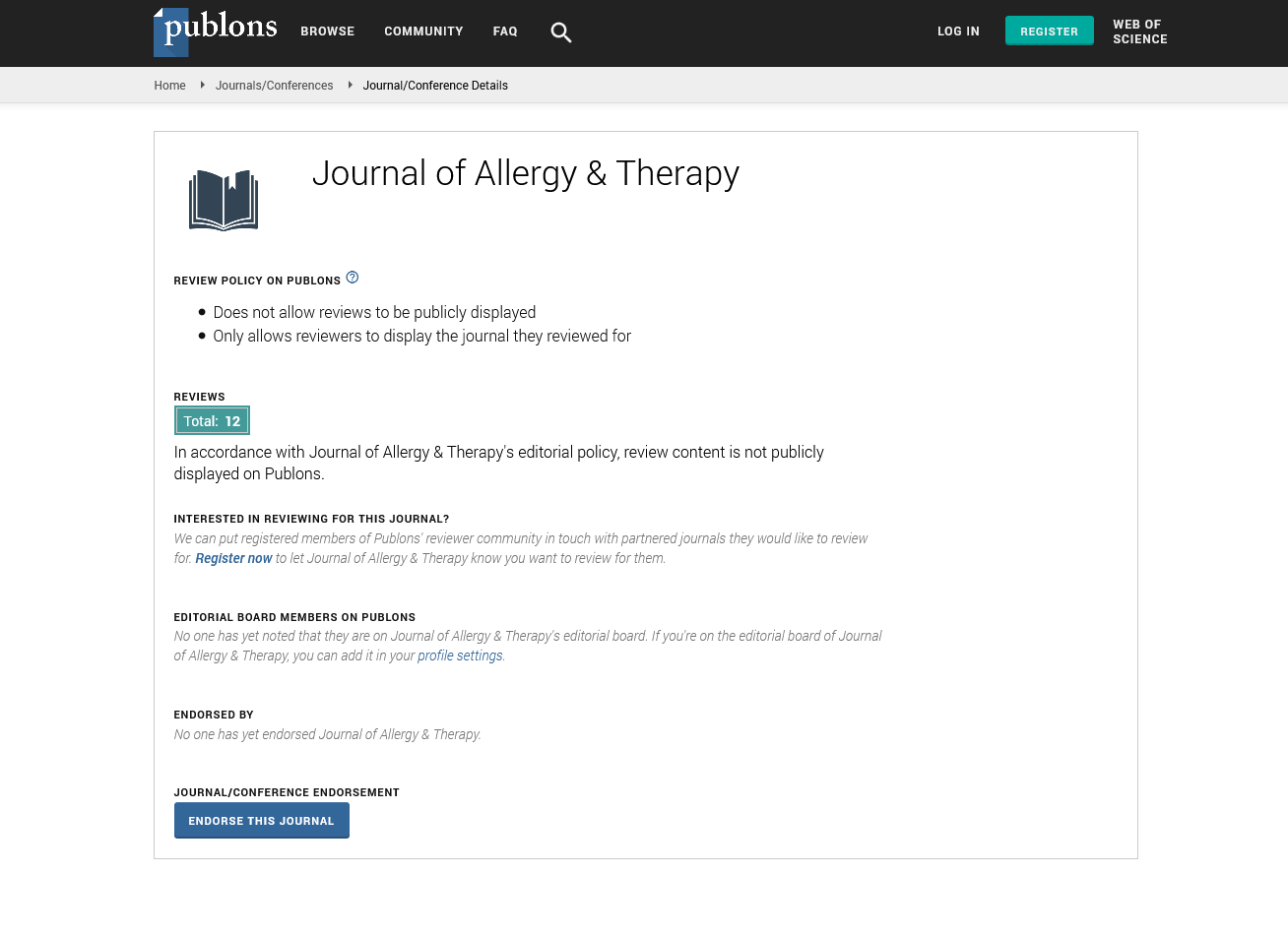Indexed In
- Academic Journals Database
- Open J Gate
- Genamics JournalSeek
- Academic Keys
- JournalTOCs
- China National Knowledge Infrastructure (CNKI)
- Ulrich's Periodicals Directory
- Electronic Journals Library
- RefSeek
- Hamdard University
- EBSCO A-Z
- OCLC- WorldCat
- SWB online catalog
- Virtual Library of Biology (vifabio)
- Publons
- Geneva Foundation for Medical Education and Research
- Euro Pub
- Google Scholar
Useful Links
Share This Page
Journal Flyer

Open Access Journals
- Agri and Aquaculture
- Biochemistry
- Bioinformatics & Systems Biology
- Business & Management
- Chemistry
- Clinical Sciences
- Engineering
- Food & Nutrition
- General Science
- Genetics & Molecular Biology
- Immunology & Microbiology
- Medical Sciences
- Neuroscience & Psychology
- Nursing & Health Care
- Pharmaceutical Sciences
Commentary - (2022) Volume 13, Issue 12
Oral Exposure to Known and Suspected Gut Barrier Disruptors: Food Allergy Adjuvant and Early Immune Effects
Blanchard Jose*Received: 28-Nov-2022, Manuscript No. JAT-22-19232; Editor assigned: 02-Dec-2022, Pre QC No. JAT-22-19232 (PQ); Reviewed: 16-Dec-2022, QC No. JAT-22-19232; Revised: 23-Dec-2022, Manuscript No. JAT-22-19232 (R); Published: 30-Dec-2022, DOI: 10.35248/2155-6121.22.13.320
Description
Food allergies are regarded as a significant public health concern with high expenses that appear to have developed in the western world over the past few decades. Environmental exposures and lifestyle choices have been proposed as potential causes, despite the fact that the explanation for this increase is mainly unknown. Food allergies may arise as a result of biological or chemical pollutants that have the ability to act as adjuvants by modifying and/or amplifying the immune response to foodborne antigens.
In animal models, it has been demonstrated that exposure to adjuvants along with food allergens both encourages and necessitates the development of food sensitization and allergy. Cholera Toxin (CT), the adjuvant that is most frequently utilised in these studies, has also been demonstrated to exhibit gut barrier-disturbing effects. Compounds that have the ability to activate or harm the intestinal epithelial barrier are known as gut barrier disruptors. This could cause a leaky gut, which would increase the amount of allergens and other substances that enter the bloodstream through the intestinal lumen and come into direct touch with the immune system. Additionally, a compromised epithelium barrier may trigger reactions that result in the synthesis of alarmins and other endogenous warning signals.
As alarmins, the cytokines Interleukin 33 (IL-33), Thymic Stromal Lymphopoietin (TSLP), and IL-25 are generated when an infection or other cellular stress results in cell destruction. By typically activating T helper 2 and type 2 innate lymphoid cells, these alarmins can generate an allergic milieu in addition to playing key functions in regulating gut homeostasis.
In animal models, it has been shown that the mycotoxin Deoxynivalenol (DON) and House Dust Mite (HDM) extracts have the ability to impair barrier function and to favour the development of food and airway allergy, respectively. Human colonic biopsies have revealed the presence of the HDM allergen Der p1 and shown that it affects the epithelial barrier both in vitro and in vivo (mice). Children are more likely to develop atopic sensitization and respiratory allergies when HDM allergen is present in breast milk. As a result, we proposed the hypothesis that substances that can impact the integrity and functionality of the gut barrier contribute to the development of (food) allergy. Additionally, according to our working hypothesis, substances with the potential to act as adjuvants for allergies can cause changes in barrier function soon after exposure, and markers for these early changes may one day be used to pinpoint the adjuvants that are helping people develop food allergies.
In this work, a mouse model of peanut allergy was used to examine how known and potential disruptors of the intestinal barrier affected the emergence of food allergies. After repeated oral exposures to peanut extract along with one of the barrier disrupting chemicals CT, DON or HDM, the putative barrier disruptor glyphosate (GLY), sensitization and the development of a clinical peanut allergy were evaluated. Although GLY's ability to break barriers is uncertain, it has been claimed to have impacts on the generation of alarmin and effects on gut flora. A single oral exposure to the chemicals was also studied for its early effects, which included local immunological responses, alarmin production, and markers of intestinal integrity 4 to 48 hours after exposure.
The groups exposed to DON with or without the PE allergen showed the most notable outcomes in terms of the early impacts. In both short-term tests, groups exposed to DON showed elevated levels of the intestinal alarmins IL-33 and TSLP, the IL-33 receptor ST2 in blood, and the immune response markers TNF-, IL-6, and IFN produced from LPS-stimulated MLN cells. After a single CT exposure, only a small number of these markers showed convincing effects. None of these markers were noticeably affected by HDM or GLY. In the peanut food allergy paradigm, DON and CT both encouraged the development of clinical anaphylaxis, but only DON demonstrated a distinct pattern of effects on the early indicators.
Citation: Jose B (2022) Oral Exposure to Known and Suspected Gut Barrier Disruptors: Food Allergy Adjuvant and Early Immune Effects. J Allergy Ther. 13:320.
Copyright: © 2022 Jose B. This is an open access article distributed under the terms of the Creative Commons Attribution License, which permits unrestricted use, distribution, and reproduction in any medium, provided the original author and source are credited.


